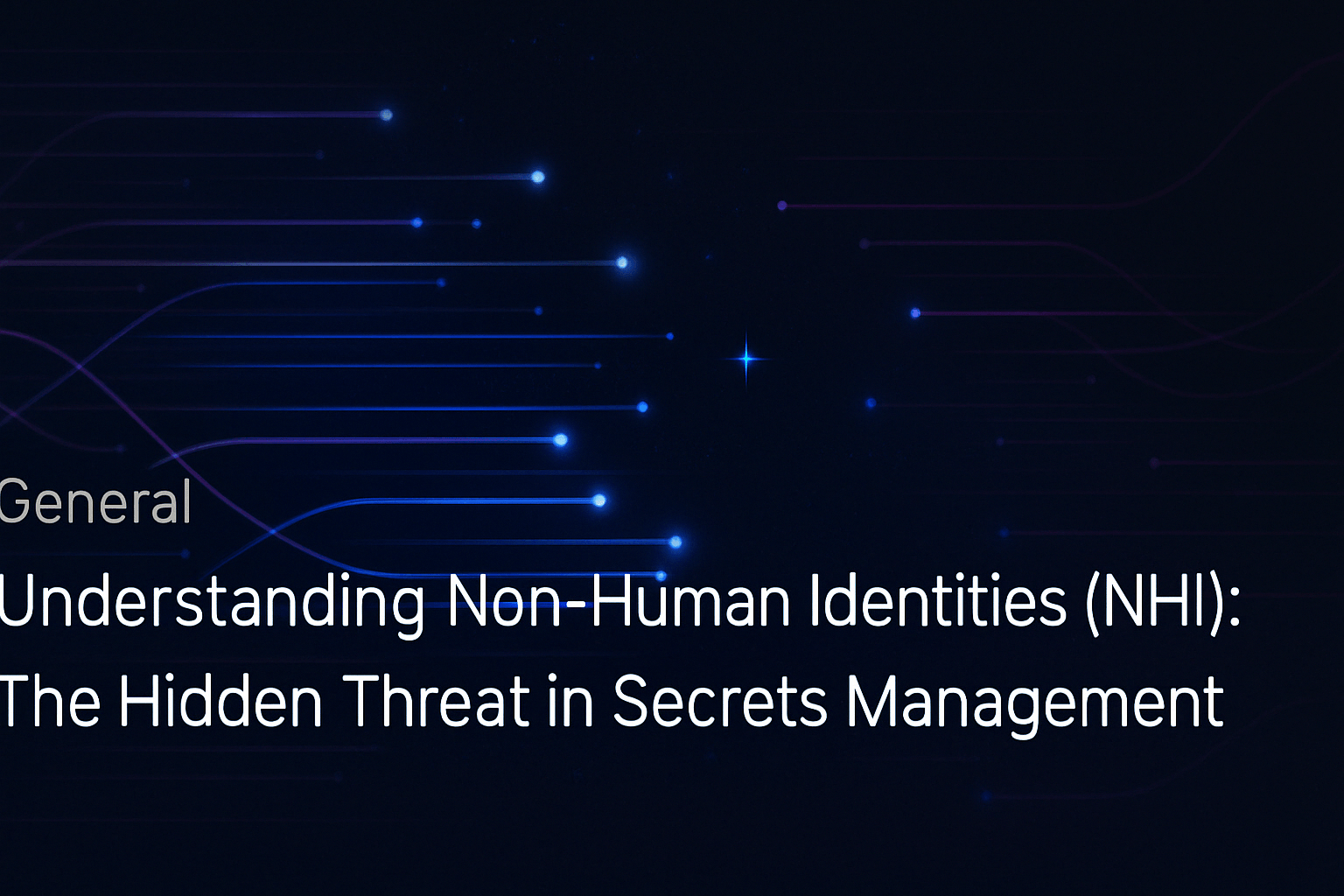Understanding Non-Human Identities (NHI): The Hidden Threat in Secrets Management

Understanding Non-Human Identities (NHI): The Hidden Threat in Secrets Management
Secrets and secret managers have long been a foundational component of application configuration and deployment. From API keys and database credentials to OAuth tokens and service accounts, secrets play a pivotal role in enabling applications to communicate securely. However, managing and securing these secrets presents a growing challenge — especially with the rise of Non-Human Identities (NHI).
The Risks of Traditional Secrets Management
While secrets help secure applications, they often lack the lifecycle controls and access governance measures applied to human users. Once a secret is exposed — intentionally or otherwise — it becomes difficult to control or revoke. Secret sprawl and privilege creep are common, especially when secrets are long-lived, overly permissive, and not rotated regularly.
Security leaders, including CISOs and DevSecOps teams, worry about one thing: secret leakage. When secrets are not treated with the same rigor as human credentials, they become an easy target for attackers.
Rethinking Secrets: Treating Them Like Human Identities
One modern solution is to treat secrets like human identities:
- Secrets should be onboarded and offboarded like employees.
- Access should be time-limited and revocable.
- Secrets should follow Principle of Least Privilege (PLOP).
This approach helps organizations build auditability, accountability, and visibility into how secrets are used — just like with human users.
The Rise of Non-Human Identities (NHI)
As organizations adopt cloud-native architectures and integrate with more third-party services, Non-Human Identities have exploded in number. NHIs include:
1. Static Credentials
- Long-lived database usernames and passwords
- Legacy platform integrations
2. OAuth Applications
- Google Workspace integrations
- Third-party SaaS API access
3. Bots
- Automation scripts using user tokens or credentials
4. Service Accounts
- AWS IAM roles
- Kubernetes service accounts
- API tokens used in CI/CD pipelines
Even at early-stage startups, NHI growth is exponential. In our case, the number of active NHIs grew 4x in a single quarter as we expanded integrations and scaled internal services.
The Problem with NHI at Scale
Unlike human identities, NHIs often lack:
- Lifecycle management
- Visibility into usage patterns
- Granular access controls
This makes them an ideal target for attackers and a nightmare for compliance teams. Worse still, with agentic workloads and AI-driven processes, the line between automation and identity will only blur further.
How to Solve the NHI Problem
1. Privileged Access Management (PAM)
Classical PAM systems allow for controlled assumption of identities. When combined with Just-In-Time (JIT) access), NHIs can be provisioned with temporary, tightly-scoped access that improves both security posture and auditability.
2. Dynamic Secrets Management
Adopt solutions that support dynamic, time-bound secrets rather than static credentials. This makes it harder for secrets to be reused or leaked.
3. NHI Governance Platforms
At Adaptive, our platform brings discovery, governance, and enforcement to NHI usage. Our solution offers:
- Real-time scanning for exposed secrets
- Policy-driven consumption controls
- Lifecycle management for secrets and identities
- Audit-ready workflows for both human and non-human access
Why Adaptive?
Adaptive enables organizations to bring zero trust principles to their workloads. Our NHI governance platform helps you:
- Identify all active NHIs across your stack
- Control when and where these identities can be used
- Enforce access boundaries and expiration policies
- Monitor NHI behavior with full visibility and logs
As organizations become more service-oriented and automated, Non-Human Identities will represent one of the largest attack surfaces. Traditional secrets management strategies are no longer sufficient. It’s time to treat secrets like people — with identity-aware access, limited lifespans, and complete observability.
 SOC2 Type II
SOC2 Type II

